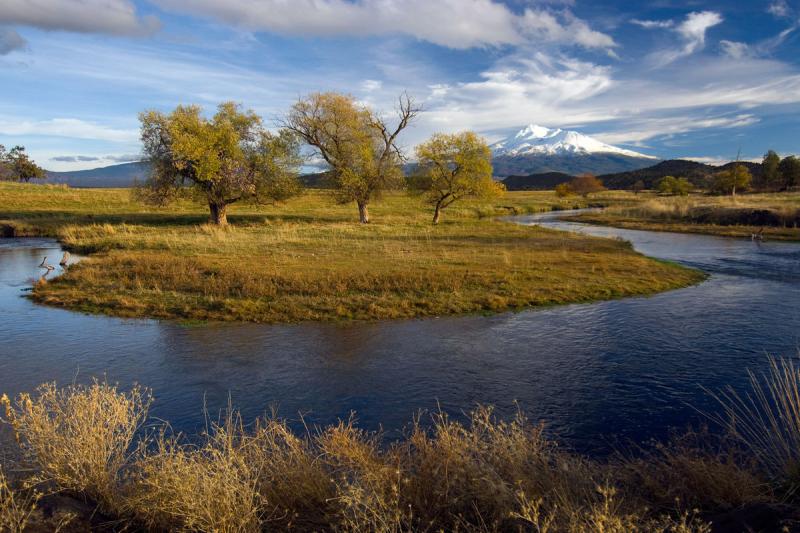Landowners, agencies, and others have made history with a landmark agreement in northern California’s Shasta Valley. The Shasta River Safe Harbor Agreement supports recovery of federally threatened coho salmon while also assuring that a working landscape of farms and ranches will live on.
The voluntary agreement signed in early 2021, culminates an eight-year journey between conservation-minded landowners and the California Department of Fish and Wildlife. Other key partners included California Trout, The Nature Conservancy, and NOAA Fisheries. Through years of education and cooperation, the partners developed a mutual understanding of opportunities for landowners to support recovery of fish protected under the Endangered Species Act and landowners’ needs to maintain viable operations.
“We could not have accomplished this without the trust, commitment, and care of all the partners,” said Jim Simondet, Klamath Branch Chief in NOAA Fisheries’ West Coast Region. “This is truly a partnership and agreement built for the long term benefits of fish and ranchers.”
The agreement seeks to improve conditions for coho salmon on more than 30,000 acres of the Shasta River watershed, an important tributary of the Klamath River. Private property owners agree to improve habitat to help recover Southern Oregon/Northern California Coast coho salmon listed under the Endangered Species Act. In exchange, they receive regulatory assurances removing the risk of additional regulation and penalty under the Endangered Species Act. These assurances remain as long as they maintain and improve important coho salmon habitat on their lands.
The Shasta River Valley contains some of the most valuable and rare aquatic habitats for coho salmon in the region. The Shasta River’s ice-cold springs have historically supported vibrant salmon populations, but alterations over the past 180 years have resulted in population declines. The Safe Harbor Agreement provides for a working landscape that also conserves habitat for coho recovery.
Landowner Cooperation Essential
Much of the valley is privately owned, and coho primarily spawn and rear in the upper watershed. The cooperation of partners is crucial for the recovery of coho salmon.
“While there have been differences of opinion on how to address the Safe Harbor Agreement, I firmly believe this is an avenue to achieve the common goals of all interested parties, from environmental groups, to agricultural ventures, and the public at large—we all have the same interests when it comes to improving habitat while maintaining a way of life,” said Jack Roggenbuck, President of the Shasta Watershed Conservation Group. “We are committed to working together with all these groups, despite historic challenges, to achieve that goal.”
The Shasta River was historically one of the largest producers of spring- and fall-run Chinook salmon, coho salmon, and steelhead trout in the Klamath River Basin. Impaired water quality and changes in river function are the key limiting factors for coho in the Shasta River.Juveniles are the most vulnerable life stage—poor water quality and stressful conditions during hot, dry summer months put them at risk.
The agreement outlines more than 100 restoration actions to improve water quality and habitat conditions over 37 river miles in the next 20 years. The actions include removing fish passage barriers and improving irrigation systems so that cold water can remain in the stream. Other steps include adding off-channel ponds where juveniles can grow, and protecting riparian corridors by fencing out cattle and planting native species.
These actions will advance recovery of coho salmon. In addition, the agreement includes a monitoring plan. This will allow parties to evaluate progress and adapt over time to meet the purposes of the agreement and collaborate with partners of the Klamath Basin.
The Shasta Safe Harbor Agreement is a testament to what partners can achieve by putting differences aside, rolling up their sleeves, and working together. In this case, it’s a win for both coho salmon and farms and ranches. That’s something to celebrate.



